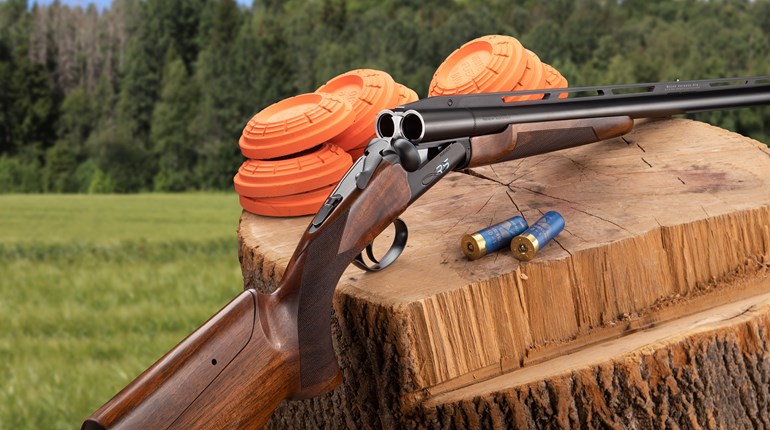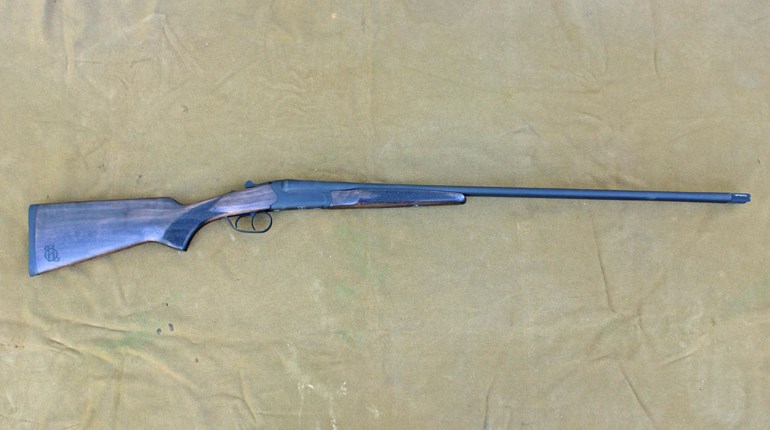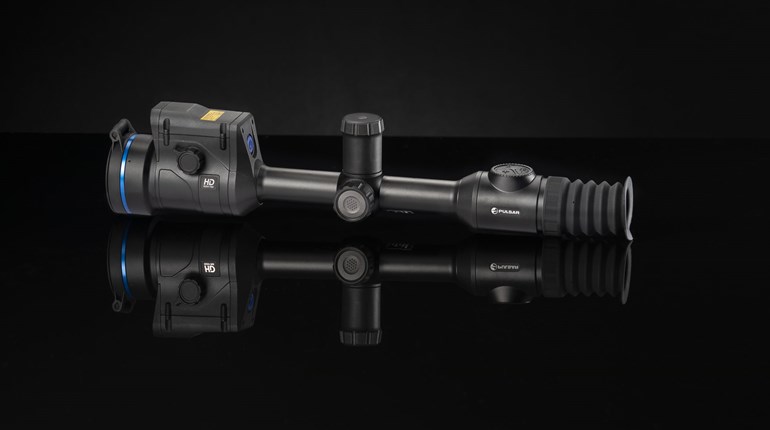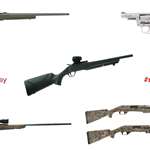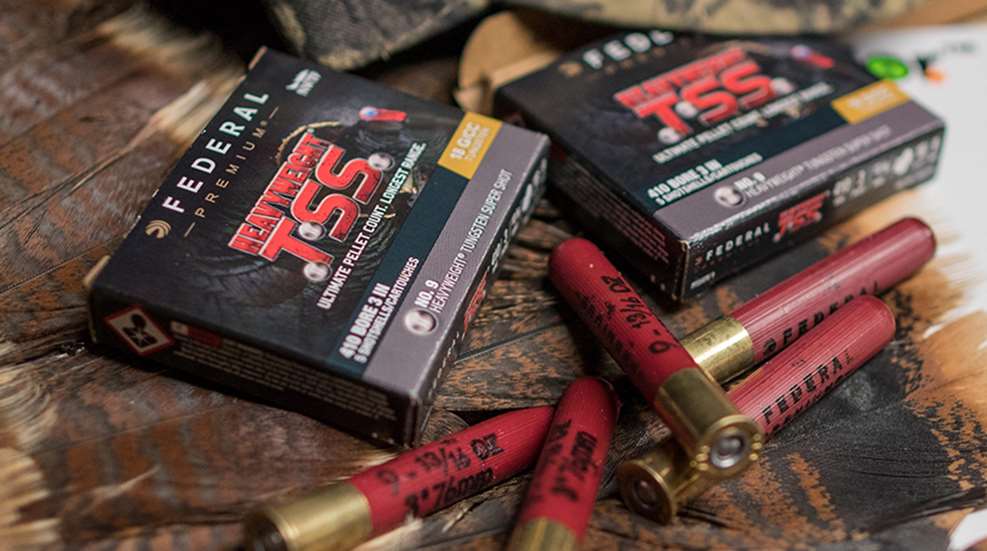
Back in the day, if you asked me what shot size to use for turkeys I'd tell you No. 6s, because they’ve always worked for me. No. 6s out of my 12-gauge shotgun gives me roughly 400 lead pellets (from an average magnum 1 ¾ ounce load), yet still has plenty of energy to cleanly take birds at 50 yards and slightly beyond. (If I’m being honest, I’ve taken them out to 62 yards with No. 6s, I just didn’t know it was 62 when I shot.) Of course, for every dude like me touting No. 6s, there's a hunter who swears by No. 4s, citing the theory that while there may be a few less pellets than No. 6s—roughly 235 pellets in a 1¾ ounce load—each pellet has more downrange energy, therefore it theoretically can increase max range. In response to this raging debate, some savvy hunters split the difference with No. 5s.
With that said, this was during the days of lead shot. A pure lead cylindrical pellet's weight is academic after its diameter is set. For example, a .11-inch diameter No. 6 weighs 2 grains, a No. 5 measures .12-inch and weighs 2.6 grains, and a .13-inch diameter No. 4 pellet weighs 3.3 grains. Now, however, thanks to ammo innovators like Federal, we've got new materials to work with, and therefore superior options.
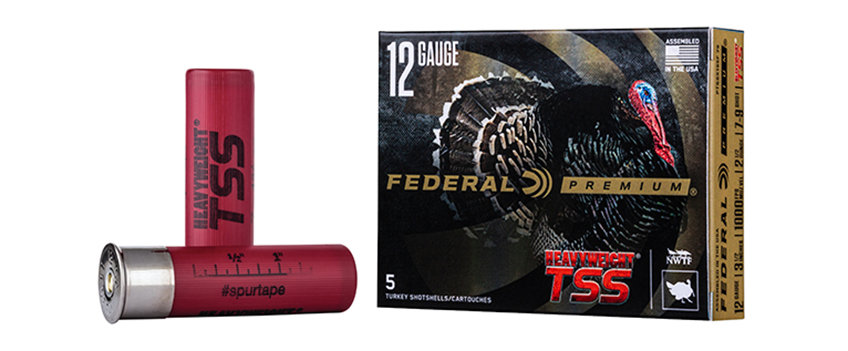
The best example is Federal’s new Heavyweight TSS (Tungsten Super Shot) load that’s available in No. 9 shot (No. 7s are also available) that contains more than double the amount of lead No. 5 pellets in an equal-weight load, yet has the same amount of energy per pellet. You see, the smaller Tungsten Super Shot No. 9 pellet weighs the same as a No. 5 because its 18 gm/cc tungsten-alloy material is 56 percent denser than lead and 22 percent denser than even regular tungsten. Can you guess how many pellets the No. 9 load has in a 1¾ ounce load? An incredible 635 pellets! If that’s not enough, Federal’s 3½ -inch Heavyweight TSS No. 9 load with a 2¼ ounce payload contains 814 pellets! Fired at 1200 fps, folks, that translates to a swath of destruction deadlier than a swarm of African Killer Bees.
So that's the scoop on the pellets; the Heavyweight TSS load also has other features I've come to expect from Federal. Holding the shot in the column and protecting it from initial setback forces is the company’s revolutionary (as of about 10 years ago) Flight Control Flex wad. It works via two ways: First, rather than forward plastic petals peeling back like the barrel of Elmer Fudd's shotgun after Buggs sticks a finger in it, the Flight Control Flex features two tabs of thick plastic three-quarters of the way back that more subtlety deploy as they catch air, thereby reducing the wad’s speed gradually, so the shot eases out of it while in flight.
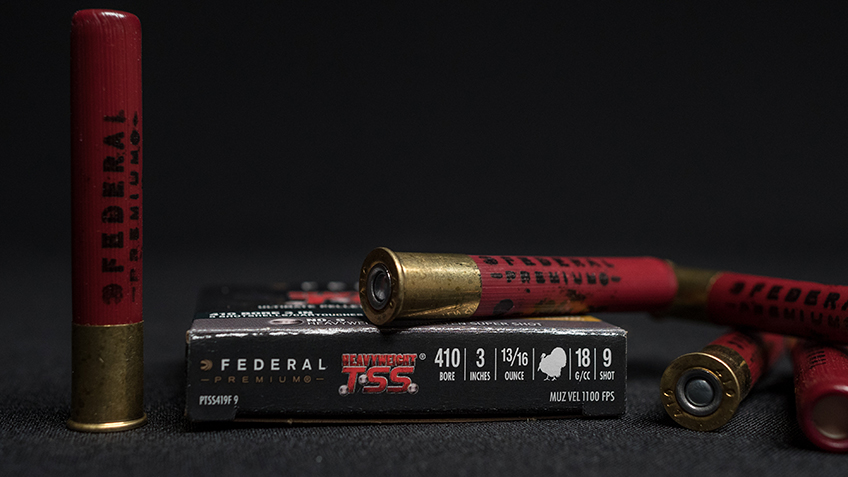
The other aspect is its weight; it weighs several times that of a traditional wad, which means it has more momentum and therefore stays with the shot longer, holding it together. Just shoot a target at 25 yards and see for yourself. The wad will usually go through the box! What all of this means is that the Heavyweight TSS with Flight Control Flex produces tighter patterns than other cheaper wad designs. I've proven this over and over on patterning boards. Finally, the shell is sealed and waterproofed from primer to crimp, so you can drop it in water—or keep it for years—and still expect that it will go ‘bang’ when that longbeard tiptoes in at 50 yards and begins to act spooky.
Where the Heavyweight TSS load really shines, however, is in the small gauges that are handicapped only by pellet count. Its 20-ga. load that holds 1½ ounces of No. 9 TSS pellets will turn your son or daughter’s little shotty into bonafide turkey slayer on par with grandpappy’s 12-gauge. I have a buddy named Jason Hart who is attempting the World Slam with a .410-bore. Previously, I might have called it a stunt, but the Heavyweight TSS turns the .410 into a viable turkey load with its 3-inch., 13/16 ounce No. 9 shell that delivers about 295 pellets, all that have the energy of lead No. 5s. After learning Hart was using Heavyweight TSS, I told him he was cheating!
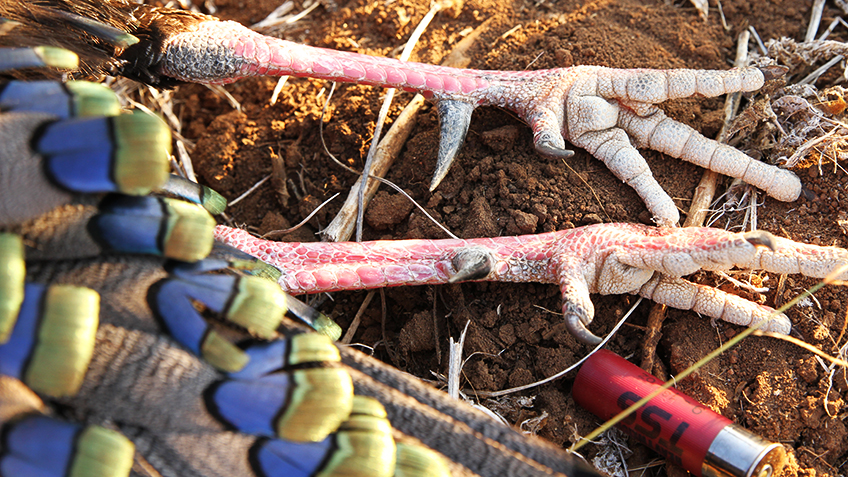
Now the downside of TSS: New technology and metals such as tungsten-alloy are expensive, and therefore so is the TSS product. That’s right, it’s silly expensive at around $50 per 5-round box, or $10 per shell, for 12-gauge No. 7s or No. 9s. For 2019, Federal introduced blended Heavyweight TSS loads, such as No. 7s and 9s, and No. 8s and 10s, for hunters who truly want the best of all worlds in one turkey-specific shell. Those loads are even more expensive at around $60 per 5-round box ($20 to $32 in 20-gauge). While it is expensive, it is also likely the best.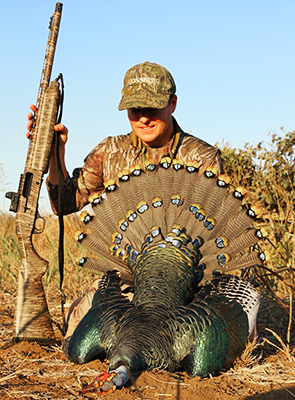
What I know for sure is that the loads worked for me recently in the Campeche state of Old Mexico. Of course, at 33 yards, most any shell would have worked, but the trip for an ocellated turkey was likely a once-in-a-lifetime bucket list hunt for me. A fair amount of dinero in travel and outfitters fees was on the line, and so for about the price of checking my bags at the airline counter, I had confidence knowing that I’d be loaded with the best ammo possible if I had to take a shot on the extreme edge of range—or come home empty-handed. The gorgeous green-and-iridescent blue bird dropped right where it stood as if it had been hammered by lightning bolt, when in fact, it was hammered by a Mossberg 930 loaded with a Heavyweight TSS shell.












